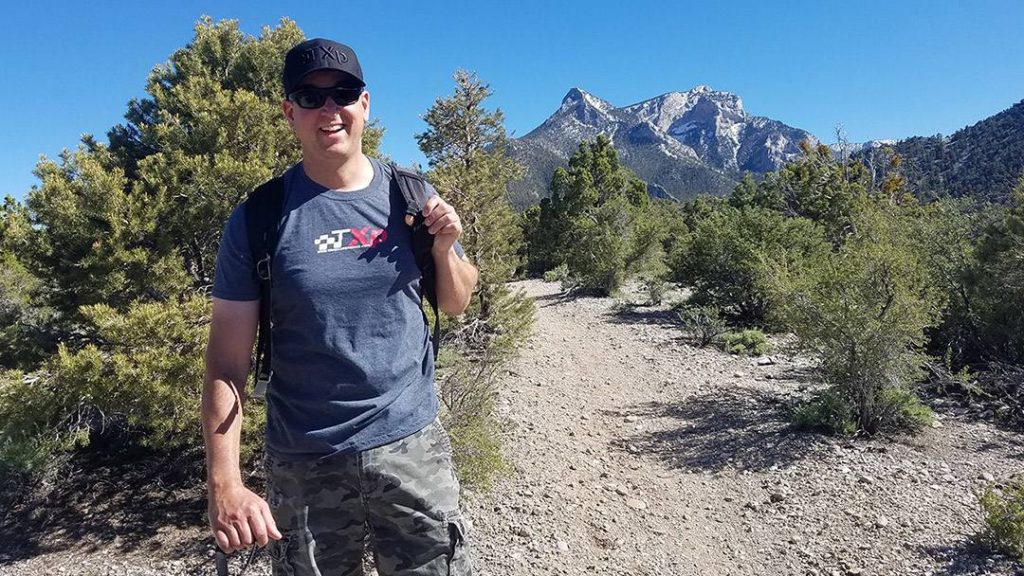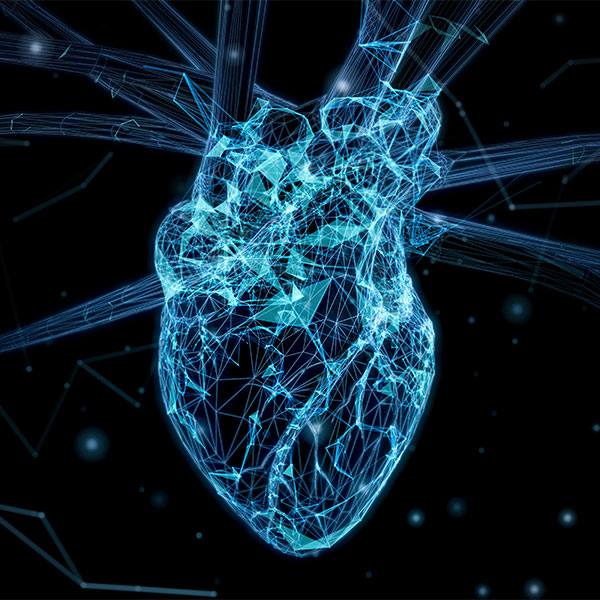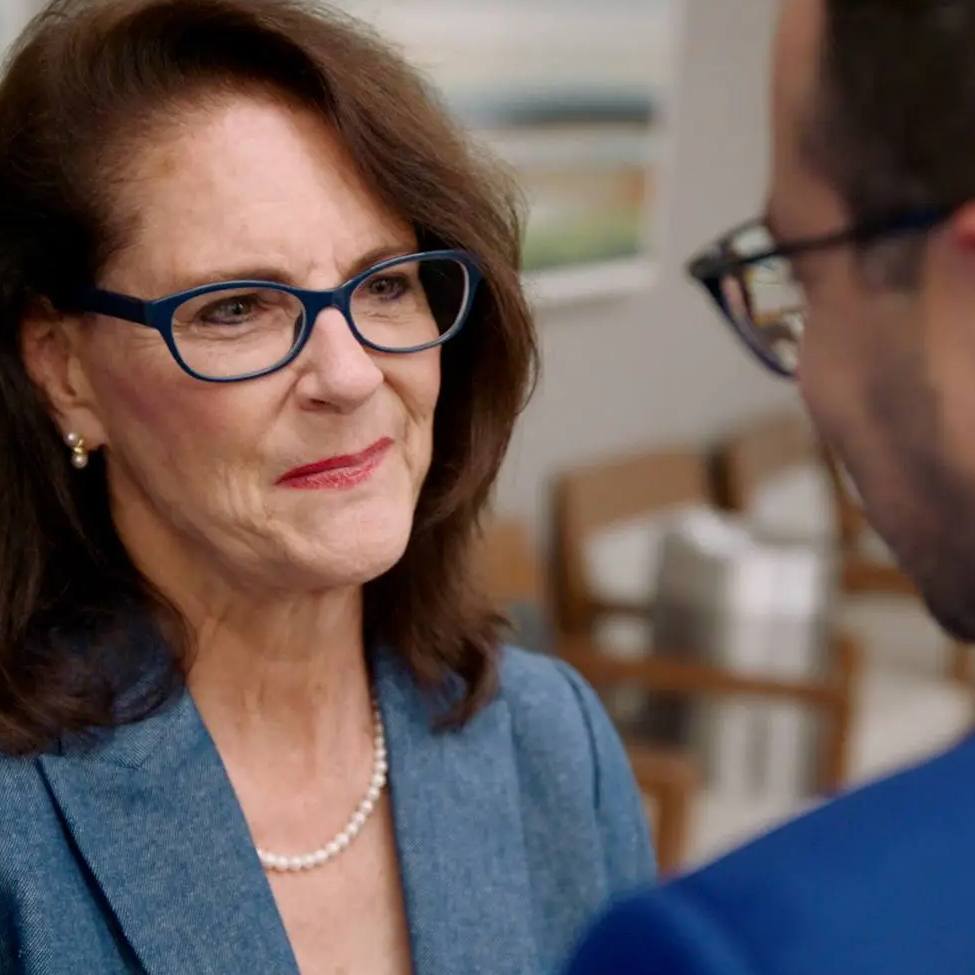-
Sharing Mayo Clinic: A brighter future after nerve transfer surgery

For six months after surgery to repair an injured radial nerve, Patrick Metzger couldn't lift his wrist or extend the fingers in his right hand. Seeking help, he made an appointment with the Peripheral Nerve Clinic at Mayo Clinic in Arizona. There his care team gave him new hope that he could regain his hand function.
Patrick Metzger will never forget the first time he got on a motorcycle when he was 23. "I was in Arkansas visiting my dad while on leave from the Air Force," he says. "I went on a ride with him and loved it."
Patrick got his motorcycle license and continued to ride with his dad and brother until he decided to get his own motorcycle in 2009. Then, in 2016, he bought a race bike and started racing around a track.

"You go out on the track to do the warm-up lap. The flagger is up on the stand. All the engines rev while you're waiting for the green flag. When it goes up, you can feel the front end of your bike come off the ground," Patrick says. "It's so exciting."
But on Dec. 2, 2017, the excitement turned to injury. During a race in Southern California, Patrick flipped over the front of his bike. He broke both of his arms and fractured a vertebra in his back. He also injured his right radial nerve — the nerve that runs down the back of the arm, controlling movement of the triceps muscle and allowing for extension of the wrist and fingers.
Patrick was rushed to the emergency department at a Palm Springs hospital. Doctors there performed two surgeries: one to fix his broken bones and another to repair the injured radial nerve. After nine days in the hospital, Patrick returned to Las Vegas, where he lives and works for a defense contractor at Nellis Air Force Base.
"After the nerve repair, I was told it would take six months to heal. I had grip function but could not lift my wrist, extend my fingers out or lift my thumb," Patrick says. "It was extremely limiting not to be able to use my dominant hand. I missed six months of work and had to learn how to do lots of things with one hand."
Patrick went to see several local doctors about the nerve damage in his hand. He was referred to a plastic surgeon who recommended Patrick go to the Peripheral Nerve Clinic at Mayo Clinic in Arizona.
Comprehensive evaluation reveals a way forward
During his first visit to Mayo Clinic in June 2018, Patrick had an appointment with Shelley Noland, M.D., a hand and peripheral nerve surgeon. "They did electromyography to confirm what did and didn't work," Patrick says. "Then I met Dr. Noland, who told me I still had radial nerve palsy from my accident, and there was a narrow window to get this treated."
"Radial nerve palsy is one of the most common nerve palsies, and it's typically related to trauma," Dr. Noland says. "As a result of injury to the nerve, patients cannot lift their wrist or fingers. This is commonly referred to as a 'wrist drop.'"
"Dr. Noland is professional, intelligent and very passionate about what she and her team do. Everyone I talked to was at the top of their game."
Patrick Metzger
"Dr. Noland and her team went through every muscle and tendon from my shoulder to my hand and explained the surgical options I had," Patrick says.
"We felt Patrick needed more than just a nerve repair because the site of injury was very far from the muscles. Additionally, electromyography did not demonstrate any recovery," Dr. Noland says. "To maximize his function, we recommended nerve transfers to reroute signals from healthy nerves into injured nerves, bringing them back to life. This would allow him to lift his fingers independently, which is important for activities like keyboarding and fine manipulation."
After his assessment and the discussion with Dr. Noland, Patrick agreed to move forward with nerve transfer surgery. "Dr. Noland is professional, intelligent and very passionate about what she and her team do. Everyone I talked to was at the top of their game," Patrick says. "I've never been so thoroughly examined in my life."
Life-changing surgery with remarkable results
Patrick underwent surgery in July 2018. During the three-hour procedure, Dr. Noland and neurosurgeon Pelagia Kouloumberis, M.D., completed nerve transfers to Patrick's paralyzed radial nerve. Then, after about a month of recovery, Patrick started working with Cece Skotak, a certified hand therapist at Mayo Clinic, to learn the rehabilitation exercises he would need to do at home to retrain his brain to move his wrist and fingers.
In January, Patrick drove to Arizona for a follow-up appointment with his occupational therapist and Dr. Noland. "She had me perform a task that required me to extend my fingers, and I was able to do it," Patrick says. "Dr. Noland was so excited when I showed her how the first knuckles of the fingers were working again. It was mind-blowing to see this progress after going so long without having my hand working."
Patrick pushed harder to accelerate his recovery. "The more progress I saw, the more motivated I was," Patrick says. "When I bent down to grab my backpack, I noticed my right wrist didn't drop. It didn't flop around. That was immediately encouraging."
"Being able to do things like shaking someone's hand makes me feel like I've gotten my life back."
Patrick Metzger
A few months later, he was able to start typing again. "It was a very steep uptick from there in terms of capability. Today, I can independently fully extend each one of my fingers on my right hand. I can open bottles and jars. I can use tools again," Patrick says. "Being able to do things like shaking someone's hand makes me feel like I've gotten my life back."
Back at work, Patrick is now able to again perform his duties and responsibilities in support of the mission at Nellis Air Force Base. He also has returned to being an Air Force reservist. And he's been doing some practice riding at the track, too. Patrick will continue to have six-month follow-ups with Dr. Noland and the multidisciplinary team for another year.
"There was a long period of time I didn't know what my future was going to be, and now I do know," Patrick says.
The results Patrick has enjoyed following his surgery highlight the benefits of the specialty care provided at the Peripheral Nerve Clinic. "Your hands touch every aspect of your life, and the ability to bring function back to the hand is life-changing. Not to mention the economic implications this has — people can maintain their jobs and livelihoods," Dr. Noland says. "That's why we love the Peripheral Nerve Clinic because you can bring life back to a paralyzed arm."
HELPFUL LINKS
- Learn more about peripheral nerve injuries.
- Read about peripheral nerve injury care at Mayo Clinic.
- Explore the Department of Neurosurgery.
- Connect with others talking about nerve disorders on Mayo Clinic Connect.
- Visit Mayo Clinic in Arizona.
- Request an appointment.







